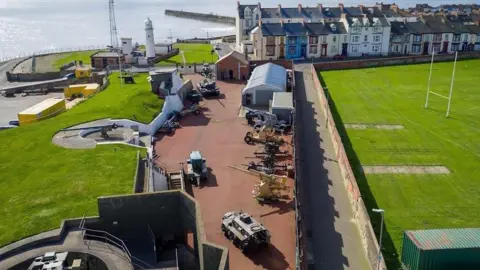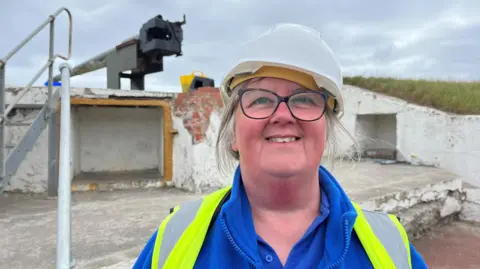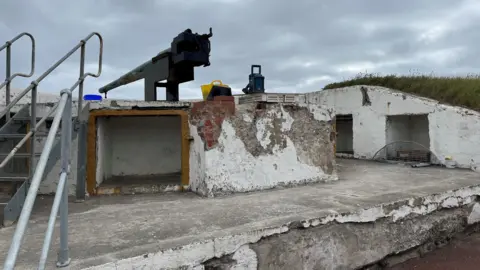Work to 'stop decline' at WW1 museum under way
 Heugh Battery Museum
Heugh Battery MuseumWork has started to improve a World War One site which was deemed "at risk" by Historic England in 2023.
The Heugh Battery in Hartlepool was put on the conservation body's list due to "neglect, decay or inappropriate development".
The government announced £33m of cultural funding for such sites in March 2024, awarding the historic museum with almost £500,000.
Manager Diane Stephens said the past few months had been "tough" as parts of the site had to close, but hoped work would be completed by the end of August.
The Heugh Battery is known as the UK's first and only WW1 battlefield, after three German battlecruisers attacked Hartlepool in 1914.
More than 100 civilians were killed and 400 injured, but the Heugh Battery guns returned fire and are credited with cutting the bombardment short.
After securing £497,534 for essential repairs, work began on the site in February.
'Stop the decline'
Ms Stephens said the museum was placed onto Historic England's at-risk list initially when the team noticed cracks in the gunning placement and a "big bit fell off".
She said it was not the only issue the museum faced.
"We've got water coming in everywhere, not just even in the cracks and making concrete unstable, but we've had flooding issues," she said.
"We have had issues in the underground parts of the museum where the metal has gone really rusty. It really needed some management to stop the decline."

Due to the work, most of the site has been closed off to the public, but the team has recently opened a new exhibition which features a German bomb from one of the ships during the bombardment.
Ms Stephens said the past few months had been tough.
"Our visitor numbers are down and our income is down about 50% on the same time last year, so we really are struggling to pay our way this year.
"It's great to have the funding to do the works but we've got to keep the underlying things paid for too, like the electricity."

Xsite Architecture's Tim Bailey, who is working on the site, said the location of the museum left it exposed to the elements.
"This marine environment is battered by wind, salt and water which has meant that quite a bit of the components of the site have been eroded and are decaying," he said.
"This work will stabilise that and make sure that it continues to exist for future visitors."
He said he hoped to be able to return the site to something that both demonstrated the sacrifice of WW1 and a "place where people will come and talk about what that means today".
